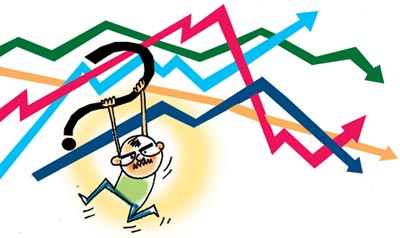 | « Back to article | Print this article |
Investing in mutual funds? 5 TRAPS to avoid
Here are five red flags that should prompt you to look beyond a mutual fund's five-star rating.
The Morningstar Rating for mutual funds has long been held as the gold standard to evaluate mutual funds globally.
Commonly known as the star rating, it provides a composite, visual measure of a fund's historical risk-adjusted return compared to peers: in any particular category, funds clocking the top-10 per cent risk-adjusted returns get a five-star rating, followed by the next 22.5 per cent, 35 per cent, 22.5 per cent and 10 per cent, respectively, from four to one stars.
While often misconstrued as a buy signal from our side (Morningstar also runs a parallel forward-looking, qualitative Analyst Rating for funds (http://www.morningstar.in/posts/5784/enhanced-morningstar-analyst-ratings-for-funds-2.aspx), which is our view of a fund's potential based on a few other important factors apart from performance), the star rating exists to give an investor an instant summary of a fund's risk-adjusted past performance and to help her/him screen funds worthy of further research and investigation.
Here we list down five situations where investors should look beyond a fund's star rating, even if it is rated five stars.
Investing in mutual funds? 5 TRAPS to avoid
1. Treating it as a blind-buy
Like we said before, if all you do while considering a fund for investment is going for the ones with the highest star rating, it is the first but common mistake you will do.
Whenever you come across a five-star fund, you must look to find out what were the drivers behind its performance to try and understand how it may fare in the future, how the fund stacked up in different market environments (bull, bear and sideways markets), its investment strategy and whether its risk profile makes a good fit for your portfolio.
Investing in mutual funds? 5 TRAPS to avoid
2. Is the fund a good fit for my portfolio
Not many Indian investors make asset allocation a priority though it is likely the eventual decider whether you will find success with your investments.
For instance, even a diversified equity fund is a strict no-no for an investor with only a one- to two-year horizon as short-term returns from equity are always volatile, disparate and unpredictable. So if you include an even-riskier mid-cap fund (even if it sports a five-star tag), you've committed investing hara-kiri.
Investing in mutual funds? 5 TRAPS to avoid
3. How relevant is the fund's strategy for me?
Funds come in various hues and even after you have decided on whether it would be an equity or debt fund and in whichever proportion, you will have to zero in on the categories of the fund (large or small-cap equity/short-term or long-term bond and so on).
If that's not enough, funds within each of those categories vary greatly by nature. So a large-cap fund could be an index fund, or one that tracks its benchmark index (apt for a relatively-conservative risk-taker), or active funds of a diversified or concentrated nature (for an investor who can take on more risk).
Similarly, a fund may have undergone a strategy change, which would undercut the relevance of its past performance. There are several cases where a concentrated fund becomes more diversified in nature, if it has become a large-cap fund after being a mid-cap fund previously or if the fund manager has decided to stop taking cash calls. Such notable changes in strategy may be warrant ignoring its past performance/star rating.
Investing in mutual funds? 5 TRAPS to avoid
4. Is the fund manager still around?
After you have looked into a fund's past performance and tried to understand its drivers, in some cases, you will find that the fund manager who was at the helm for most part of the superlative run may no longer be around. That one reason alone may be a factor to ignore the star rating and start evaluating the fund with a fresh slate.
Different fund houses have different investing cultures, with some putting an institutionalised process in place largely followed by fund managers or where teams take collective investment decisions, in which case a fund manager's departure may not be a signal to rush for the exits.
But there are several cases where a star fund manager single-handedly drives investment decisions and after whom, the fund's past performance could simply become irrelevant.
Our qualitative, opinion-driven Analyst Ratings have several instances where a fund was downgraded only because the manager is no longer around.
Investing in mutual funds? 5 TRAPS to avoid
5. Treating all star ratings as equal
While many investors are aware that a five-star large-cap fund is not the same as a five-star mid-cap or fixed-income fund, many do not know that funds in the same category or peer group and having the same rating may also not be equal.
To understand this, we will have to dive a bit deeper into how the star rating is awarded: as soon as a fund completes three years in a relevant category, it gets awarded with a star rating on the basis of its three-year performance.
But as soon as it goes on to complete five years, its overall star rating becomes a mix of its three- and five-year performances, with greater weightage given to the longer-term period of five years. A similar exercise is done when a fund completes 10 years where its overall rating is a weighted average of its performances across the three-, five- and 10-year periods, with greater emphasis on the 10-year period.
Remember, that a five-star fund that has been in existence for three years will not be the same as a five-star fund that has been around for more than 10 years, as the latter has proved its performance across market cycles and over a longer period.






